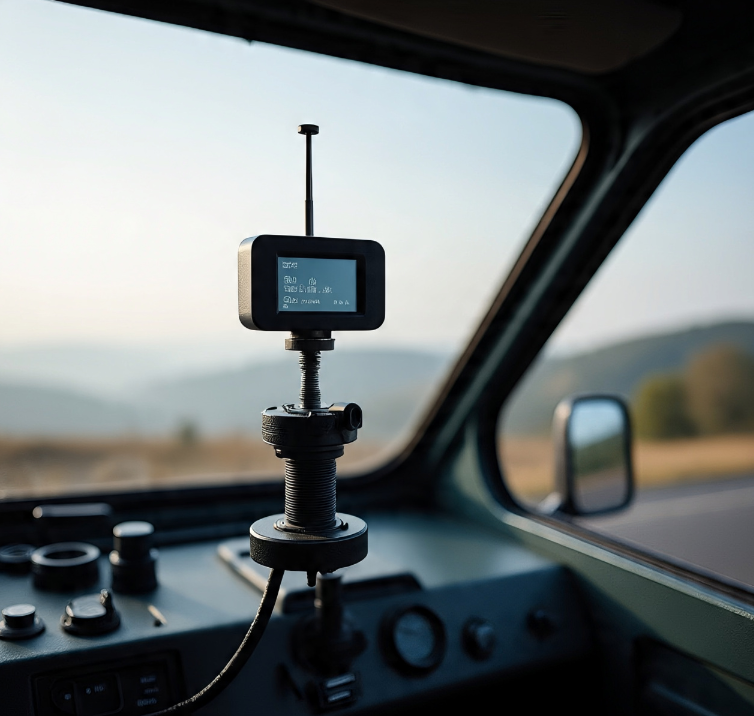A radio direction finder is a smart tool that helps people know where a radio signal is coming from. People use it on boats, airplanes, and even for fun outdoor activities. A radio direction finder listens to radio waves and tells you the direction they are coming from. This tool is great for helping people stay safe or find lost things. Many professionals like pilots, ship captains, and even emergency workers use it every day. If you like learning about how gadgets work, this is a great one to explore. It’s not too hard to use, and it’s fun when you start to understand how it works.
The radio direction finder is also used in games and learning. Kids can use it during treasure hunts or when playing spy games. Teachers can use it in science class to explain how signals move. When people lose things that send out signals, like a radio collar on a pet, this tool helps find them. Even weather stations use it to track storms. The tool is small enough to carry but powerful enough to find faraway signals. It teaches kids and adults how radio waves travel in the air. People everywhere, from the city to the sea, use it in smart ways. Whether for work or fun, it makes finding things easier and more exciting. This tool is helpful, clever, and makes learning about signals super cool.
What Is a Radio Direction Finder and Why It’s So Useful
A radio direction finder is a smart tool that helps you know where a radio signal is coming from. It works like a compass for sounds in the air. People use it to find lost boats, airplanes, or even hidden radios. It is very helpful when someone is in trouble and needs to be found fast. Many workers, like police and rescue teams, use it to stay safe and help others. It can also be used in schools and games to teach kids how signals work. This tool is useful because it saves time, helps people learn, and makes finding things easier. It’s fun to use and teaches you cool things about the air around you.
How a Radio Direction Finder Works in Simple Words
A radio direction finder works by catching radio signals in the air. It has a special antenna that turns and listens to where the sound is the strongest. When it hears the loudest part of the signal, it shows you the direction it’s coming from. It’s a bit like playing “hot and cold,” but with sounds in the air. The tool has a screen or dial that tells you where to look. Some are small and can fit in your hand, and some are bigger for boats or planes. Even kids can learn to use it with help. It’s simple and exciting, like a treasure map for sounds. Once you learn it, you’ll feel like a real explorer!
Top Real-Life Uses of a Radio Direction Finder
People use a radio direction finder in many important ways. On boats, it helps the captain find signals from the coast or other ships. In planes, it helps pilots know where they are in the sky. Rescue teams use it to find people who are lost and calling for help. It is also used in science to track weather and storms. Even in fun games, it can help find hidden transmitters. Farmers use it to check weather stations, and workers use it to keep people safe in cities. The tool is strong and smart, and many jobs need it every day. It is not just a toy—it helps people, saves lives, and teaches us a lot too.
Easy Ways to Try a Radio Direction Finder at Home or Outside
You can try a radio direction finder at home or in your yard with a simple setup. Some tools are made for kids or new learners. You can find a small radio with a signal and hide it. Then use the finder to locate it. It’s just like a game of hide-and-seek! You can do this with friends or family, and it’s a fun weekend activity. If you live near a park or open area, it becomes even more exciting. You don’t need to be a tech expert. Just follow a guide or watch a video online. It’s fun, easy, and helps you learn new things. This is a great way to play and grow smarter.
Why Pilots and Sailors Trust a Radio Direction Finder
Pilots and sailors use a radio direction finder because it helps them stay safe. When they are far away from land, this tool shows them where signals come from. It tells pilots if they are flying the right way and tells sailors where other boats or the shore is. In storms or bad weather, it is very helpful. Even when GPS is not working, the radio direction finder can still help. That’s why many pilots and captains always keep one ready. It works day and night, in rain or sun. They trust it because it is simple, fast, and never gives up. This small tool plays a big role in keeping them safe and sound.
Fun Projects You Can Do Using a Radio Direction Finder
There are many fun projects you can try with a radio direction finder. One cool idea is a signal treasure hunt. Hide a little radio or beacon, then let your friends use the finder to look for it. You can also build a small direction finder at home using kits. It teaches you about circuits, radio waves, and how tools work. In school, it can be part of a science fair. You can also use it to find real radio stations in your area. These projects are not just fun—they make you smarter and show how science is used in the real world. It’s like being a secret agent or an inventor at the same time!
Conclusion
A radio direction finder is a really smart and fun tool. It helps people find where radio signals come from. You can use it on boats, in planes, or even at home for games. It teaches you new things and helps keep people safe. Kids, adults, and workers all find it useful. It’s like a magic ear that points the way!
Trying a radio direction finder is a great way to learn and have fun. You don’t need to be a grown-up or super smart to use it. With a little help, even kids can enjoy it. So if you like science, games, or adventures, this tool is perfect for you!
FAQs
Q: What does a radio direction finder do?
A: It tells you where a radio signal is coming from so you can find it.
Q: Can kids use a radio direction finder?
A: Yes, kids can use simple ones for learning and fun games.
Q: Where can I try a radio direction finder?
A: You can try it in your home, backyard, or even a park for fun activities.




